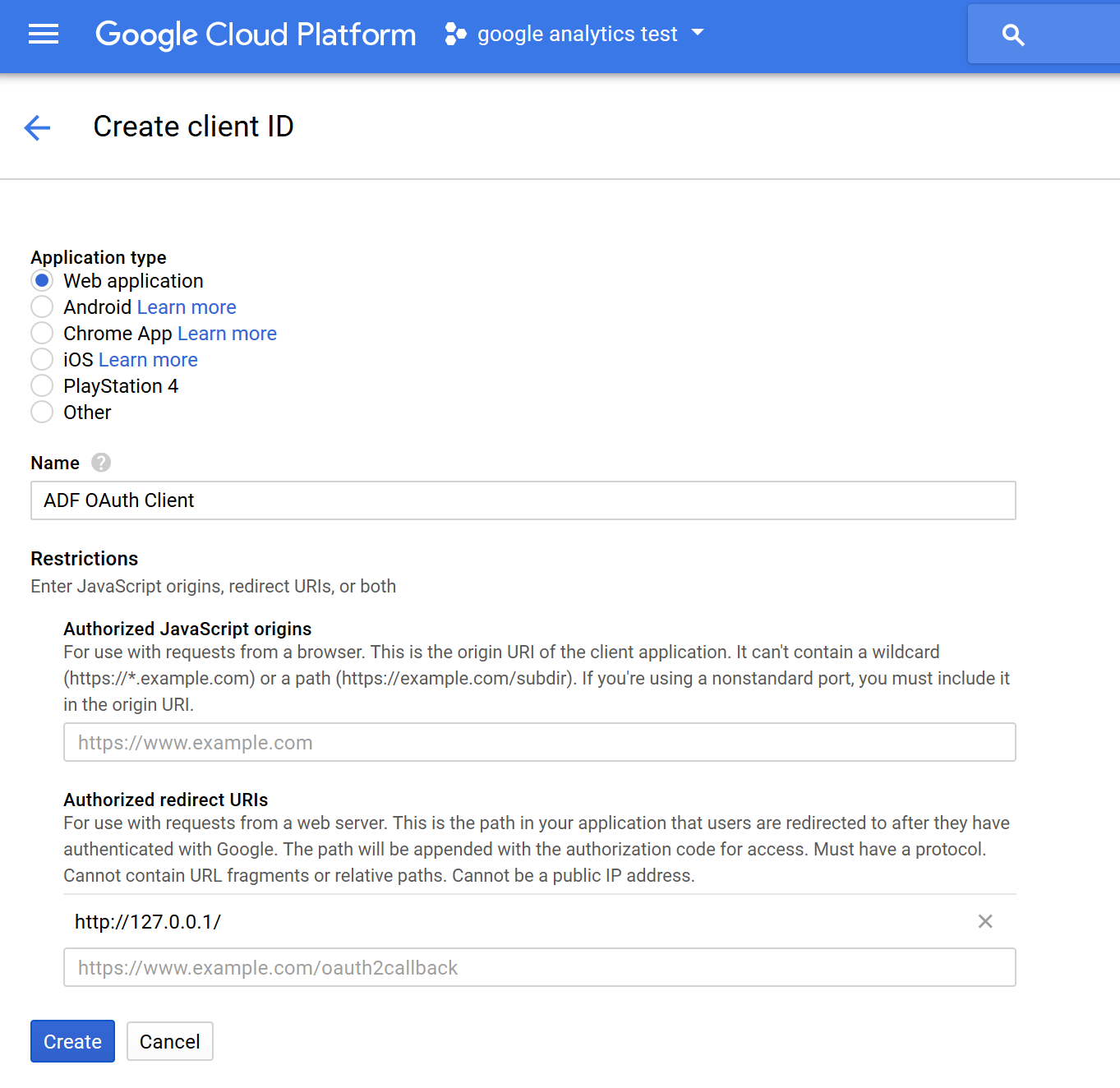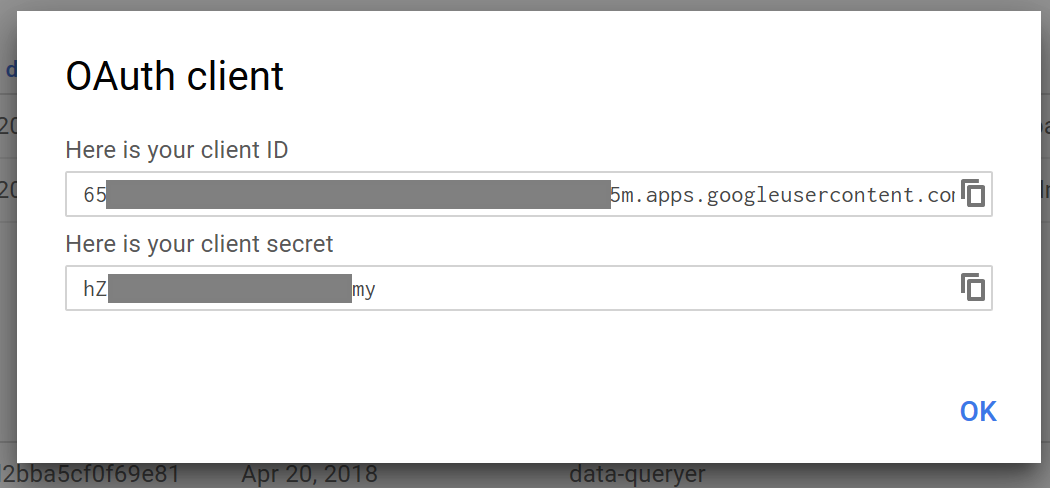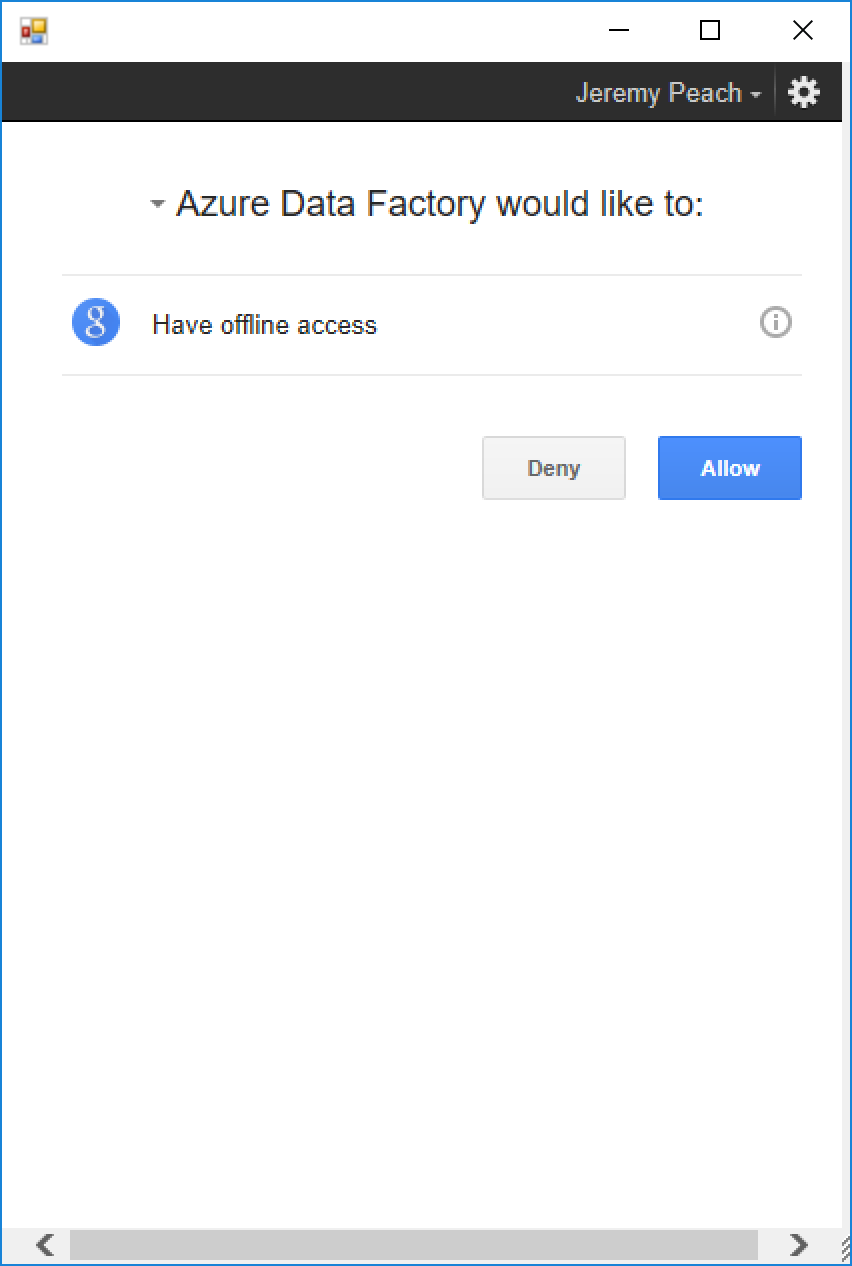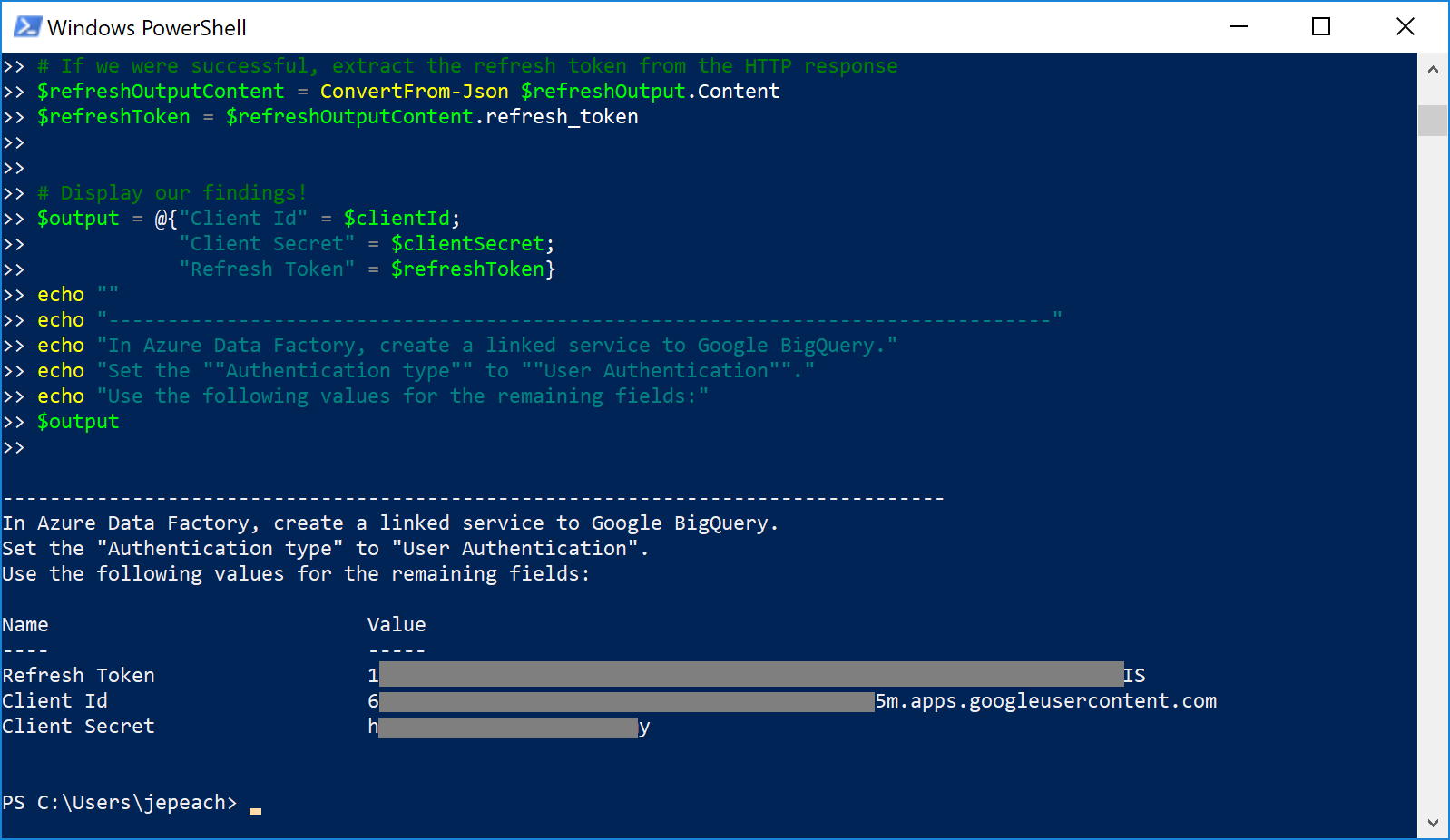TL;DR Version: You need to get a refresh token from Google. Use this PowerShell script.
Long Version
The latest release of Azure Data Factory includes a built-in connector to Google BigQuery. However, the documentation is a bit sparse on how to authenticate between the two services. This guide will provide some "lessons learned" for configuring the connector.
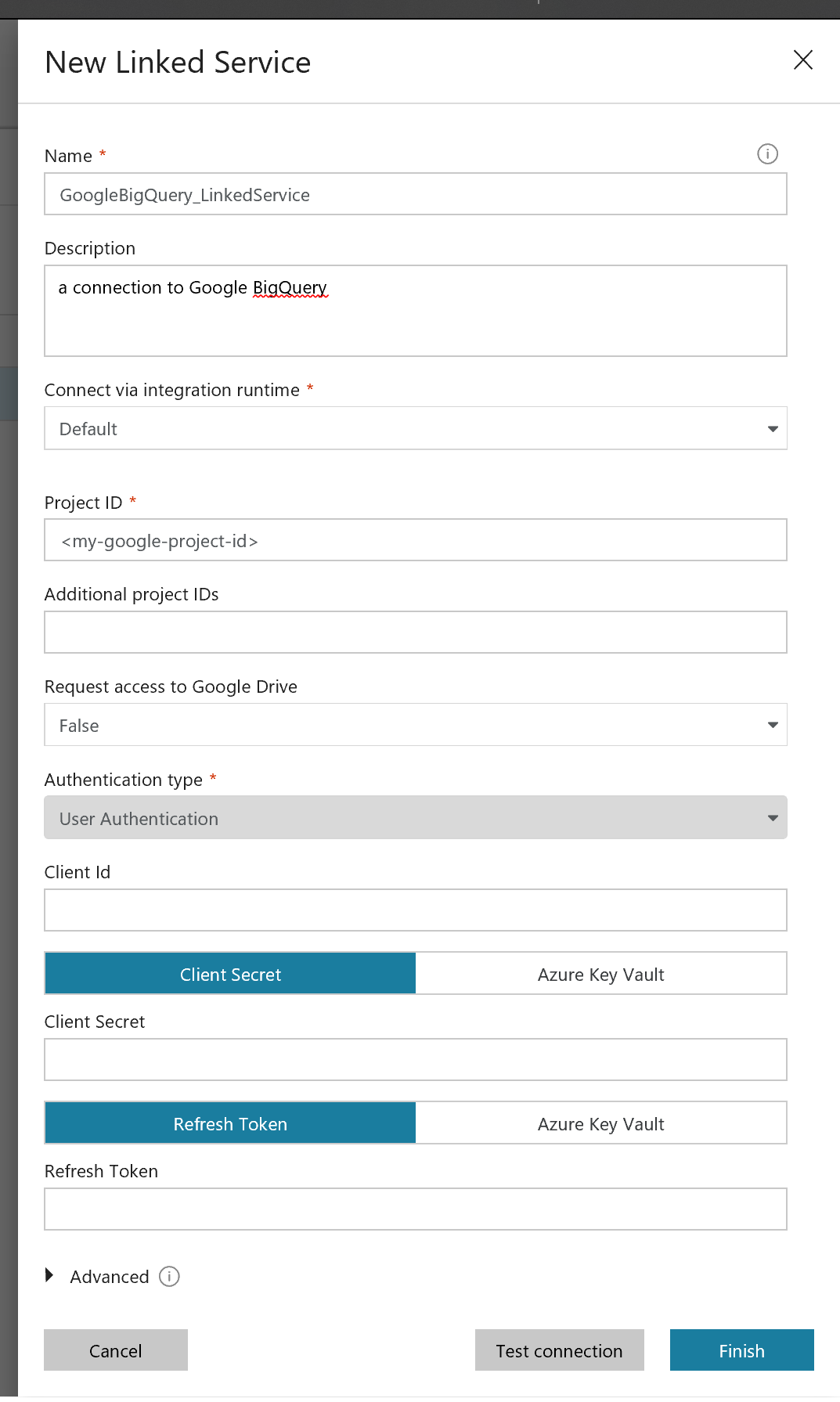 When configuring a new linked service for Google BigQuery, you must select the "Authentication type". There are two choices:
User Authentication and Service Authentication.
When configuring a new linked service for Google BigQuery, you must select the "Authentication type". There are two choices:
User Authentication and Service Authentication.
Service Authentication allows you to provide a .p12 key file containing the credentials from Google. However, this option is only available when using the Self-Hosted Integration Runtime, which runs on an on-premises server. If you want a cloud-to-cloud only solution, you cannot use Service Authentication.
User Authentication uses OAuth 2 authorization to connect your Google user account to Azure Data Factory. This option can be used with a default Azure integration runtime for a cloud-only solution. The remainder of this guide deals with this type of authentication.
When you configure user authentication for Azure Data Factory to work with Google BigQuery, the "New Linked Service" UI requires that you provide three values when using "User Authentication". These values are: Client Id, Client Secret, and Refresh Token. The first two values can be easily obtained from the GCP console. The following section shows how to get these two values. Obtaining the "Refresh Token" is covered later in this guide.
You must use the Google API Console to obtain OAuth 2.0 credentials such as a client ID and client secret that are known to both Google and Azure Data Factory. Google publishes a document named "Using OAuth 2.0 for Web Server Applications" that gives all of the details for this process. However, to make it easier, I will distill the steps here.
- If you have not yet enabled Google APIs for your project, you must do that first. (details)
- In the Google Cloud Platform console, select your project. Then select "Credentials" from the toolbar on the left side of the screen.
- Click the "Create credentials" drop-down and select "OAuth client ID".
- For "Application type", select "Web application".
- Give the client a name that will allow you to identify it later.
- The "Authorized JavaScript origins" field can be left blank.
- For "Authorized redirect URIs", you must provide a URL (even if it's a fake URL). Be sure to make note of the exact value that you use (including whether or not you used a trailing slash) because you will use it later. I recommend you use:
http://127.0.0.1/
- Click the "Create" button.
The GCP Console will display the new client ID and client secret. You can copy these values and paste them into the corresponding fields in ADF's "New Linked Service" form.
The tricky part of this process is obtaining a refresh token. To get the token, you must call the Google authentication service REST API to get an access code. Then you have to pass that access code back to Google to get a refresh token.
To make this process easier, I have written a PowerShell script (which is available in this
GitHub repo) you can use to do the "OAuth dance" with Google and get a refresh token that you can provide to Azure Data Factory.
At the top of the script, just provide values for the clientId, clientSecret, and redirectUrl variables. We got all three
of the values in the previous section of this guide.
Once you've changed the values, you can run the script in a PowerShell window. It will open a window showing a Google web page asking for your Google credentials. Log in to Google as you normally would. In the same window, Google will then ask you to authorize the request for access to the OAuth client you created in the previous section. Click the "Allow" button.
The PowerShell script will then show you the three values you need to configure the linked service in Azure Data Factory, including the refresh token. Remember that the client secret and refresh token are keys that grant access to your Google BigQuery data. Store them securely as you would any password.
